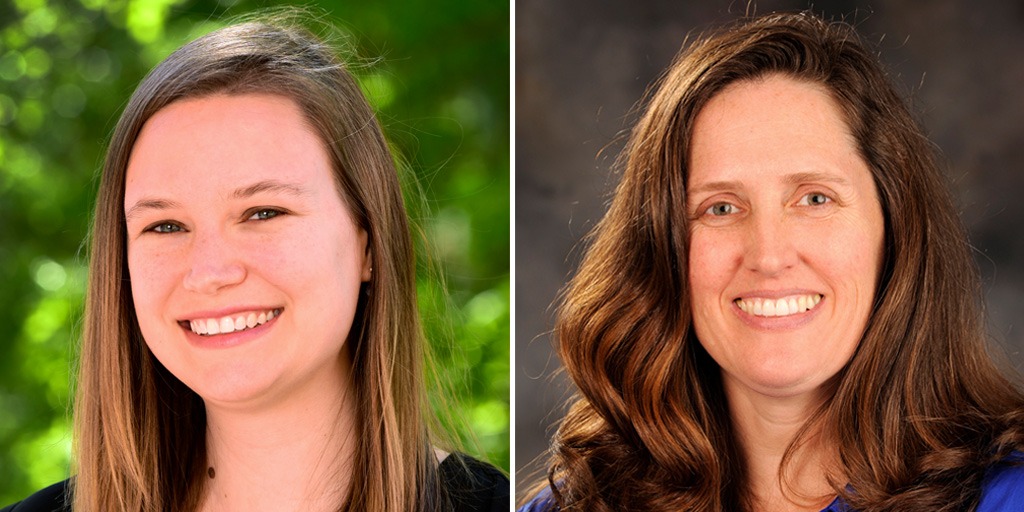The gut and the microbes that inhabit it — collectively known as the gut microbiome — serve as a critical interface between the body and the environment. This interface can affect human health in many ways, even shaping how the brain responds to environmental exposures, said Anika Dzierlenga, Ph.D., NIEHS program officer and co-chair of a Sept. 22-23 workshop(https://tools.niehs.nih.gov/conference/ieemhh_2021//page/agenda) on the topic.
“Presentations by our invited speakers underscored the need to pursue deeper understanding of the interactions between the microbiome and our environment,” noted Dzierlenga. “Given the complexity of this research and the volume of data that can be generated, there are many challenges ahead. However, I think that this workshop offered a good opportunity to discuss strategies and forge collaborations.”
The virtual event was the second in a series of NIEHS cross-divisional workshops on the microbiome. Seventeen speakers from academia, government, and nonprofits discussed the relationship between the microbiome and neurological health outcomes, considered challenges facing researchers, and showcased recent breakthroughs and new approaches for the field.
“In the short time that the microbiome has become part of the lexicon of environmental health scientists here at NIEHS and elsewhere, the interest and activity in this area has been building,” said Gwen Collman, Ph.D., the institute’s acting deputy director. “It is vital to see that these rich discussions keep moving into the future.”
A microbial world
In one of three plenary talks, John Cryan, Ph.D., from University College Cork in Ireland, reminded the audience that we are living in a microbial world.
“Within that framework, it is important to think about how we consist of our host genome, our microbial genome, and the environmental genome,” said Cryan. The term genome refers to an organism’s complete set of DNA.
He explained that the microbiome is a key regulator of brain and behavior across the lifespan, starting with early development. For example, babies born by Caesarian section have different gut bacteria than those born vaginally, and they experience a higher rate of immune and social behavior disorders. Research has shown that microbes play a vital role in shaping our social interactions, and vice versa.
“Think about what we have done over the last 18 months, where we’ve put ourselves in chronic lockdowns and social isolation, and increased our cleanliness,” said Cryan. “Are we changing our microbiome? Gut-brain axis? Social brain? This deserves a lot more attention.”
 The first workshop in the institute’s two-part series was held in February. Environmental Factor covered the virtual event, which attracted more than 500 participants. (Image courtesy of NIEHS)
The first workshop in the institute’s two-part series was held in February. Environmental Factor covered the virtual event, which attracted more than 500 participants. (Image courtesy of NIEHS)Double-edged sword
Maria Dominguez-Bello, Ph.D., from Rutgers University, described how sanitation and medicine have dramatically reduced the toll of infectious diseases. But even amid a pandemic, she acknowledged, antimicrobials are a double-edged sword. While killing the microbes that cause disease, they can also affect the microbes that are beneficial to human health.
Dominguez-Bellow shared evidence that increasing urbanization is also leading to decreased microbial diversity, which in turn could contribute to chronic diseases and shorten life expectancy. She suggested the idea of a global microbiota vault to preserve the microbes that have been lost, providing a resource for potentially restoring the diversity of the human microbiome in the future.
 “Using select tools, models, and networks can help us better define conditions such as Parkinson’s disease and understand how the microbiome affects neuropathology,” said Sutherland. (Photo courtesy of Steve McCaw / NIEHS)
“Using select tools, models, and networks can help us better define conditions such as Parkinson’s disease and understand how the microbiome affects neuropathology,” said Sutherland. (Photo courtesy of Steve McCaw / NIEHS)“Because we need to perturb nature to save lives, the only option we have is to restore,” she said. “Restoration is very big concept in ecology that needs to permeate into medicine.”
It takes a village
One of the workshop’s objectives was to promote interactions across federal and international agencies, academic institutions, and other interested parties.
“Efforts of a large number of people — essentially a community of excellent researchers, including those willing to cross disciplines — will help us slowly fill in the gaps so we can better understand where exposures, the microbiome, and the nervous system interact,” said workshop co-chair Vicki Sutherland, Ph.D., from the NIEHS Division of the National Toxicology Program.
(Marla Broadfoot, Ph.D., is a contract writer for the NIEHS Office of Communications and Public Liaison.)
Source link
factor.niehs.nih.gov

